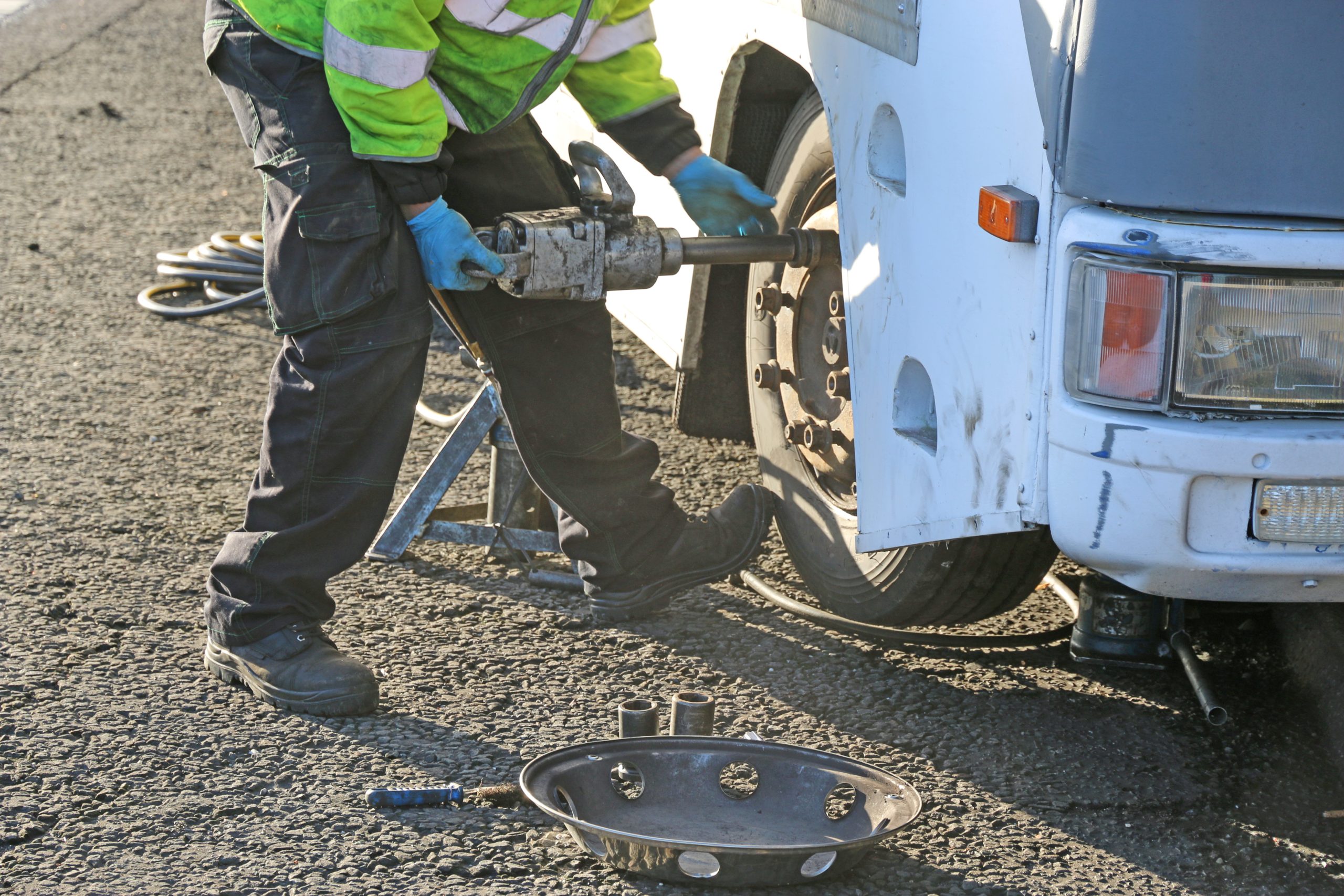Getting a flat tire in an RV isn’t just inconvenient; it can be dangerous and potentially costly without the right preparation. Unlike changing a tire on a passenger vehicle, RV tire changes often require specialized equipment and expertise due to their size and weight.
Here’s what every RV owner needs to know about RV tire costs, especially when handling tire emergencies on the road.
The Reality of RV Tire Changes
Before we dive into the details, let’s address an important truth: most RV owners should not attempt to change their own tires. Here’s why:
- RV tires are significantly heavier than car tires
- Standard car jacks aren’t rated for RV weight
- Improper lifting can cause serious damage to your RV’s frame
- The risk of injury is much higher due to the vehicle’s size
- Professional tools and hydraulic systems are often required
Instead of attempting a DIY tire change, the focus should be on prevention and proper roadside assistance coverage.
Essential Preparation Before Your Trip
Next, let’s cover all the essential preparations you can take before the trip to avoid RV tire costs from enduring a flat.
1. Tire Inspection and Maintenance
- Check tire pressure when tires are cold
- Inspect for wear patterns, cracks, or bulges
- Verify the age of your tires (replace RV tires every 5-7 years regardless of mileage)
- Ensure proper weight distribution
- Keep records of tire rotations and alignments
2. Roadside Assistance Coverage
Before hitting the road, ensure you have:
- Specialized RV roadside assistance coverage
- A clear understanding of your policy’s limits
- Contact numbers readily available
- Documentation of your RV’s specifications
- A backup plan for extended repairs
3. Emergency Kit Essentials
While you may not change the tire yourself, keep these items on hand:
- Tire pressure gauge
- Portable air compressor
- Wheel chocks
- Warning triangles or LED flares
- High-visibility vest
- Basic tools for minor repairs
- Flashlight with extra batteries
- First aid kit
What to Do If You Get a Flat
Still, even if you can’t change the tire yourself, it’s best to know what to do if you do experience a flat.
- Safety First
- Slowly reduce speed and turn on hazard lights
- Pull as far off the road as safely possible
- Choose firm, level ground if available
- Set up warning triangles or flares
- Keep all passengers away from traffic
- Assessment
- Determine which tire is affected
- Check for obvious damage
- Take photos for insurance purposes
- Note your exact location (mile marker, GPS coordinates)
- Contact Assistance
- Call your roadside assistance provider
- Provide your location and vehicle details
- Specify that you have an RV (not all services are equipped for large vehicles)
- Ask for an estimated arrival time
- Request confirmation that they have the appropriate equipment for your RV
Choosing the Right Coverage
Happy Camper Insurance recommends comprehensive RV-specific coverage that can keep you safe, while embarking on your RV adventures. Look or inquire on policies that include:
Basic Coverage
- 24/7 emergency roadside assistance
- Tire change service
- Mobile mechanic service
- Towing to nearest qualified repair facility
- Fuel delivery
- Battery jump-start service
Premium Coverage Additions
- Trip interruption benefits
- Hotel accommodations during repairs
- Alternative transportation
- Extended towing radius
- Mobile tire replacement
- Technical support hotline
Questions to Ask Your Provider
- What is the maximum towing distance covered?
- Are there weight or size restrictions?
- What are the coverage limits for tire replacement?
- Does the policy cover both motorhome and trailer?
- Are there any excluded locations or road types?
- What is the process for filing a claim?
Tips for Preventing Tire Issues
Another way to avoid getting stuck with a flat, is being sure you take the necessary precautions before you head out.
- Regular Maintenance
- Schedule professional inspections before long trips
- Maintain proper tire pressure
- Rotate tires according to manufacturer recommendations
- Address alignment issues promptly
- Weight Management
- Know your RV’s weight limits
- Distribute cargo evenly
- Use a scale to verify total weight
- Avoid overloading storage areas
- Route Planning
- Research road conditions in advance
- Avoid routes with known construction
- Plan stops at RV-friendly service centers
- Map out emergency service locations
When Professional Service Arrives
Even with professional help, you should know:
- Where to find your RV’s specifications
- The location of jack points
- How to access the spare tire (if equipped)
- Any special considerations for your RV model
The Bottom Line: RV Tires Cost & Coverage
While changing an RV tire isn’t a DIY task for most owners, being prepared for tire emergencies is crucial. The right coverage, combined with preventive maintenance and careful planning, can turn a potential disaster into a minor delay.
Remember: the cost of comprehensive roadside assistance is minimal compared to the expense and risk of handling tire emergencies without proper support. Contact Happy Camper Insurance today to review your coverage and ensure you’re protected for your next adventure.
Safe travels from your friends at Happy Camper Insurance!


